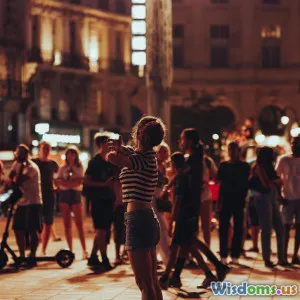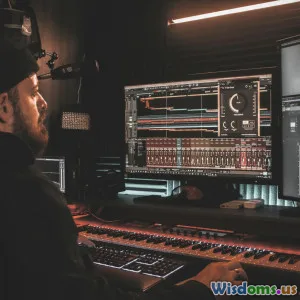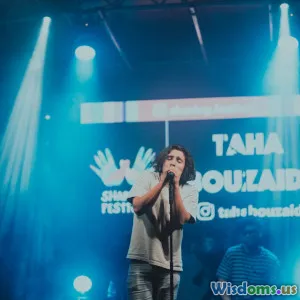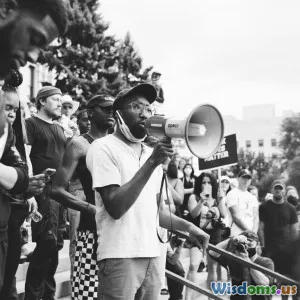
How Social Media Fuels New Dance Styles Globally
7 min read Explore how social media transforms and spreads new dance styles worldwide, connecting cultures, influencing trends, and shaping the future of global dance. (0 Reviews)
How Social Media Fuels New Dance Styles Globally
Dance has always been a living, breathing form of cultural expression, evolving continuously through time and across places. The past decade, however, has witnessed an unprecedented shift in how new dance styles emerge, spread, and dominate across the globe—social media has become the ultimate catalyst for this phenomenon. By unraveling the powerful mechanisms behind social media platforms like TikTok, Instagram, and YouTube, this article explores how they fuel the creation and globalization of dance styles.
The Digital Revolution in Dance Culture
Before social media’s dominance, new dance styles typically evolved through localized communities, cultural exchange during festivals, or the influence of media like TV and movies. This organic, albeit slow, spread meant some styles stayed confined within certain geographic or cultural boundaries for decades.
Enter social media: a digital revolution that flattened the world culturally and geographically. Today, a dance originating in a small town can reach a global audience within hours. This shift is particularly powered by platforms designed for short-form video sharing.
The Rise of TikTok: A Dance-Driven Platform
TikTok particularly symbolizes this change. Its algorithm prioritizes dance videos, allowing novices to recreate a move and broadcast it instantly to millions. For example, the "Renegade" dance, choreographed by 14-year-old Jalaiah Harmon in 2019, exploded worldwide via TikTok, despite initially going unrecognized by mainstream media. This dance gained global celebrity endorsement and massive replication, demonstrating social media’s ability to democratize dance creation and recognition.
Social Media as a Cultural Melting Pot
Fusion of Styles Across Borders
Social media fosters cross-cultural dialogue through dance. Dancers from varied backgrounds can learn traditional steps from other cultures, remix them, and share evolved versions back into the digital ether. An excellent example is how Afrobeat dance moves have gained fans globally, with influencers blending these moves with hip-hop and Latin dance styles.
This fusion increases cultural exchange but also raises discussions around cultural appropriation versus appreciation. Authenticity and respect have become emerging conversations among the dance community, propelled by the ease of cultural access via social networks.
An Example: K-Pop and Global Dance Trends
The global proliferation of K-Pop owes much to social media. Korean idol groups regularly post choreographed dance routines on YouTube and Instagram, attracting millions of international followers who learn and replicate their moves. This exposure has inspired countless hybrids and inspired dance styles worldwide, blending Western and Eastern dance traditions.
Democratization and Access: Empowering New Creators
Social media also erodes traditional barriers to entry in dance by providing anyone with a smartphone equal footing to showcase their talent. Platforms encourage creativity without the need for costly studios or professional connections.
Viral Challenges and Community Building
Dance challenges create interactive communities where users participate collectively. The "Toosie Slide" challenge by Drake spread via TikTok, generating massive visibility for the dance and the song, creating a feedback loop between music, social media, and dance.
Quantifying Impact: Engagement and Reach
Data analytics reveal staggering numbers: TikTok videos with dance content often garner tens of millions of views, exponentially more than traditional dance videos posted on other platforms. In 2022, TikTok reported that 80% of the platform’s top 100 trending songs had dances associated with them, indicating a fusion of music promotion and dance revitalization fueled by social media.
Challenges in the Social Media Age of Dance
While democratizing, social media-driven dance evolution also brings challenges:
- Homogenization: Viral dances tend to standardize movements, sometimes overshadowing diverse traditional styles.
- Copyright and Attribution: Creators often struggle for credit as their moves spread globally without acknowledgment.
- Mental Health Effects: The pressure to perform continuously for digital audiences can impact dancers emotionally.
The Future: Emerging Technologies and Dance
Artificial intelligence, augmented reality filters, and virtual reality promise to further intertwine technology and dance. Imagine interactive dance lessons in VR or AI-powered choreography suggestions integrated with social platforms, pushing new boundaries.
Moreover, NFT (non-fungible token) marketplaces have begun hosting unique dance performances as collectibles, creating a novel economic model for dancers to monetize originality globally.
Conclusion
Social media’s role in fueling new dance styles globally is transformative and multifaceted. It breaks down barriers, fuses cultures, democratizes dance creation, and challenges traditional frameworks of artistic recognition. As platforms continue evolving, so too will dance styles, making the art form more accessible, diverse, and exciting for the global community. To participate as a dancer, creator, or appreciator today means embracing a digital world where a single viral move can unite disparate cultures around rhythm and movement like never before.
In the dance of social media and culture, the world dances together — one viral beat at a time.
Rate the Post
User Reviews
Popular Posts
















